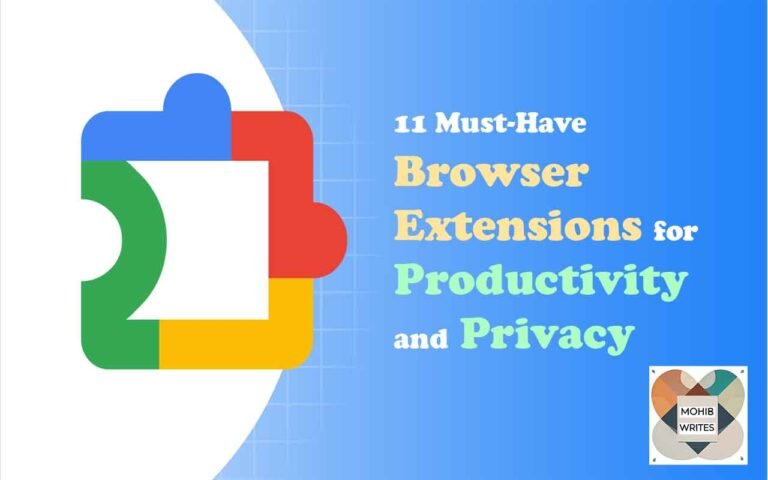
Recent Google SEO updates have introduced some significant changes, especially for eCommerce sites. With continuous updates to its algorithm, Google aims to improve the relevance and quality of search results, but these changes can influence organic traffic patterns. This article breaks down the latest updates, explaining how they impact rankings and why eCommerce and other online businesses should stay informed.
Overview of Recent Google SEO Updates
As Google adjusts its ranking algorithm, there are changes in the way certain types of content, especially shopping-related results, appear in search. Google has been expanding its use of AI Overviews, particularly for shopping queries, which impacts how organic search results are displayed. These changes mean that Google ranking algorithm adjustments are now driving a mix of organic search listings and AI-powered shopping panels, which can lead to eCommerce content appearing lower in search results.
AIO (Artificial Intelligence Overview) panels have started to show more ads, effectively shifting organic results further down on the page. This is significant because organic search visibility is crucial for brands relying on Google’s rankings. By including more ads and AI-based content, Google’s ranking algorithm is changing how users interact with shopping content.
Stability in Google SEO Algorithm for Shopping Queries
One notable trend is that the Google algorithm for SEO in shopping queries is stabilizing. Reports indicate that since September, there has been a greater alignment between AIO-generated content and organic search results. This means that for brands that perform well in traditional rankings, there’s a better chance of getting visibility in AIO panels as well.
The data shows that these AI Overviews are increasingly reflecting the same websites seen in organic rankings. This stability in Google’s algorithm can benefit businesses by making rankings more predictable. However, with the holiday season approaching, companies must still be prepared for changes as Google’s SEO updates are continuously tweaked.
Impact of Ads in AI Overviews
The inclusion of ads in AI Overviews represents a major shift. This addition is particularly impactful in competitive sectors like eCommerce, where visibility is essential. As Google’s algorithm prioritizes ad content within AI panels, organic results can be pushed lower on the page, making it harder for businesses to get noticed without paying for ad placements.
For marketers, understanding this shift in Google’s SEO updates is essential to adapt strategies for visibility. The increased presence of ads means a growing emphasis on paid search in addition to organic SEO efforts. Brands will need to balance paid campaigns with traditional SEO if they want to maintain their ranking.
Improved AIO Stability and Reduced Volatility
In recent months, the Google algorithm for SEO has demonstrated improved stability in AI Overview panels, especially in shopping-related searches. Data from BrightEdge, a digital marketing software company, indicates that AIO volatility dropped by nearly 37% from early August to late September. This decrease in volatility means that shopping-related queries are becoming more consistent in their rankings, which is encouraging for businesses planning seasonal campaigns.
These changes in Google’s algorithm are helping create a more dependable landscape for brands. For marketers, this means that seasonal planning and SEO strategies can be based on a more stable foundation, which is particularly valuable during peak sales periods.
Google’s SEO Algorithm: Greater Precision in Search Results
One of the main goals of Google’s algorithm updates is to make search results more precise. As part of this effort, there has been a decrease in the number of keywords that trigger AIOs. This demonstrates a shift toward more exact keyword matching, which could benefit businesses targeting specific terms. For example, an eCommerce website selling niche products may now find it easier to rank for highly relevant queries rather than broader, more general terms.
Google has been refining its algorithm to collapse unordered lists and deliver concise answers. This change allows users to access specific information quickly, with additional details available upon clicking. These adjustments highlight Google’s focus on offering efficient, targeted results, which is a shift that eCommerce brands can leverage by optimizing for relevant keywords and structuring content in list formats for quick readability.
Key Features of Google’s Algorithm for SEO: Product Carousels and Video Citations
In recent months, there has been a 300% increase in the frequency of product carousels within AI Overviews. This increase suggests that Google’s ranking algorithm is now prioritizing product-based content, giving advertisers a stronger presence in search results.
YouTube citations within AIOs have also surged by 121%, highlighting the importance of video content. For businesses, this is a reminder that creating multimedia content, especially videos, can enhance visibility. For example, product review videos or how-to guides could be a valuable addition to an SEO strategy. Incorporating video and visual content can improve engagement and help businesses reach customers in the early stages of the buying process.
Trends in Research-Phase Queries and Informational Content
Google’s recent SEO algorithm updates show an increased focus on research-phase queries, where users are looking for information rather than making immediate purchases. This aligns with a shift toward educational content in AI Overviews. Data from October reveals that most AIOs triggered by research-phase queries feature broad knowledge-sharing content.
For businesses, this shift underscores the importance of producing top-of-funnel content that educates users. Emphasizing informational content can help brands build credibility and attract users in the early stages of their purchase journey. Creating comprehensive, educational articles and guides aligned with search intent can make brands more visible in these types of searches.
Key Takeaways for Marketers
The latest Google algorithm updates indicate that AI Overviews will continue to be a dominant feature in search results, with an emphasis on ads and top-of-funnel content. For SEO professionals and businesses, the main takeaways include:
- Ads are now a regular feature in AI Overviews, impacting the visibility of organic results.
- Shopping queries are becoming more stable in rankings, making it easier to predict traffic.
- Google’s SEO algorithm is focusing on precise keyword matching, benefiting brands targeting niche queries.
- Product carousels and video content are gaining prominence, creating new opportunities for visibility.
- Research-phase and informational content are increasingly prioritized, aligning with a top-of-funnel focus.
In conclusion, Google’s SEO updates reflect a growing emphasis on AI-driven, ad-heavy, and educational content. Businesses aiming to thrive in this new landscape should also adjust their SEO strategies to include both paid and organic tactics, emphasizing multimedia and educational content. With these changes in Google’s ranking algorithm, staying adaptable and informed is essential for maintaining visibility and success in search results.






